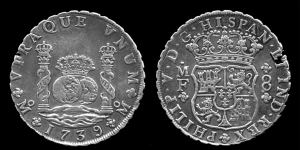By David Liechty
In 1861, as the Civil War began, gold and silver coin remained the only national currency, while private-issued fractional-reserve bank notes, redeemable in coin, remained the major medium of exchange. Coin did circulate, however, due at least in part to Congressional acts requiring the United States government to transact in coin (see Veazie Bank v. Fenno (75 U.S. (8 Wall.) 533, 536 (1869)).
Congress initially borrowed money to fund the war by authorizing sale of $10 million in Treasury notes fundamentally similar to earlier-issued notes, which were interest-bearing and redeemable at a definite point in the future (Act of 2 March 1861 (ch. 68, 12 Stat. 178). This initial sale was insufficient, however, and in July of 1861, Congress authorized issue of $250 million in “Demand Notes”, Treasury notes “not bearing interest, but payable on demand”, which could be “issued in exchange for coin” or used directly to “pay salaries or other dues from the United States”, which forwent the need to actually “borrow money” to place them into circulation (Act of 17 July 1861 (ch. 5, §1 12 Stat. 259)).
In December of 1861 the state banks again suspended payment on their issued notes (see Veazie Bank, 75 U.S. at 537), causing further difficulty for Congress to raise funds. In February and March of 1862, after heated debate, Congress passed the Legal-Tender Acts, authorizing issue of $150 million in “United States notes, not bearing interest, payable to bearer” which were “lawful money and a legal tender in payment of all debts, public and private, within the United States, except” duties on imports and interest on bonds, which had to be paid in coin (Act of 25 February 1862 (ch. 33, 12 Stat. 345)).
Rather than being redeemable in coin, these “Greenbacks” could only be exchanged for interest-bearing United States bonds (§1 12 Stat. 345). As gold and silver coin minted under the Coinage Acts of 1792 and 1837 remained the standard “unit” of value, these bonds were ultimately redeemable in coin, however, and this coin remained the fundamental monetary unit on which the national monetary system was built. Congress eventually authorized $850 million in Greenbacks, using them directly to pay government expenses, and over the next two years their value dropped from par to a low in July 1864 of $285 in Greenbacks to $100 coin.
The Legal-Tender Acts were declared unconstitutionally invalid in a majority decision delivered by Chief Justice Salmon Chase, the former Treasury Secretary who had lobbied for the Greenbacks and whom President Lincoln appointed specifically to uphold the Acts (Hepburn v. Griswold, 75 U.S. (8 Wall.) 603 (1870)). This was a highly politicized issue, however, and a year later the Supreme Court bent to outside pressure, revisited the issue, and reversed itself in a five-four decision (Knox v. Lee (The Legal-Tender Cases), 79 U.S. (12 Wall.) 457 (1871)).
The majority opinion found expansive “auxiliary” powers associated with the Constitution’s “express [grant of] power” to Congress, including “a general power over the currency” emanating from the power “to coin money and regulate the value thereof” (id. at 542). This general power over the currency included not only the non-expressly-forbidden power to emit bills of credit, but the power to declare “the government’s promises to pay money … equivalent” to the statutory “unit” of value (id. at 546, 553). Chief Justice Chase delivered a dissenting opinion in which he reaffirmed his earlier finding that the acts were unconstitutionally invalid.
David Liechty is an attorney who is currently studying for a PhD in Constitution Studies. He is interning with Solari this summer.
See Parts (I), (II), (III), (IV),(V), (VI), (VII), (VIII) and (IX)



interesting documentary:
The Ascent of Money
http://www.pbs.org/video/video/1170821435/program/1155680272
Added to the monetary history of the usa…info re: accepting bribery from foreigh govs.
ammentment-13.org
The Original Thirteenth Article of Amendment
To The Constitution For The United States
“If any citizen of the United States shall accept, claim, receive, or retain any title of nobility or honour, or shall without the consent of Congress, accept and retain any present, pension, office, or emolument of any kind whatever, from any emperor, king, prince, or foreign power, such person shall cease to be a citizen of the United States, and shall be incapable of holding any office of trust or profit under them, or either of them.”